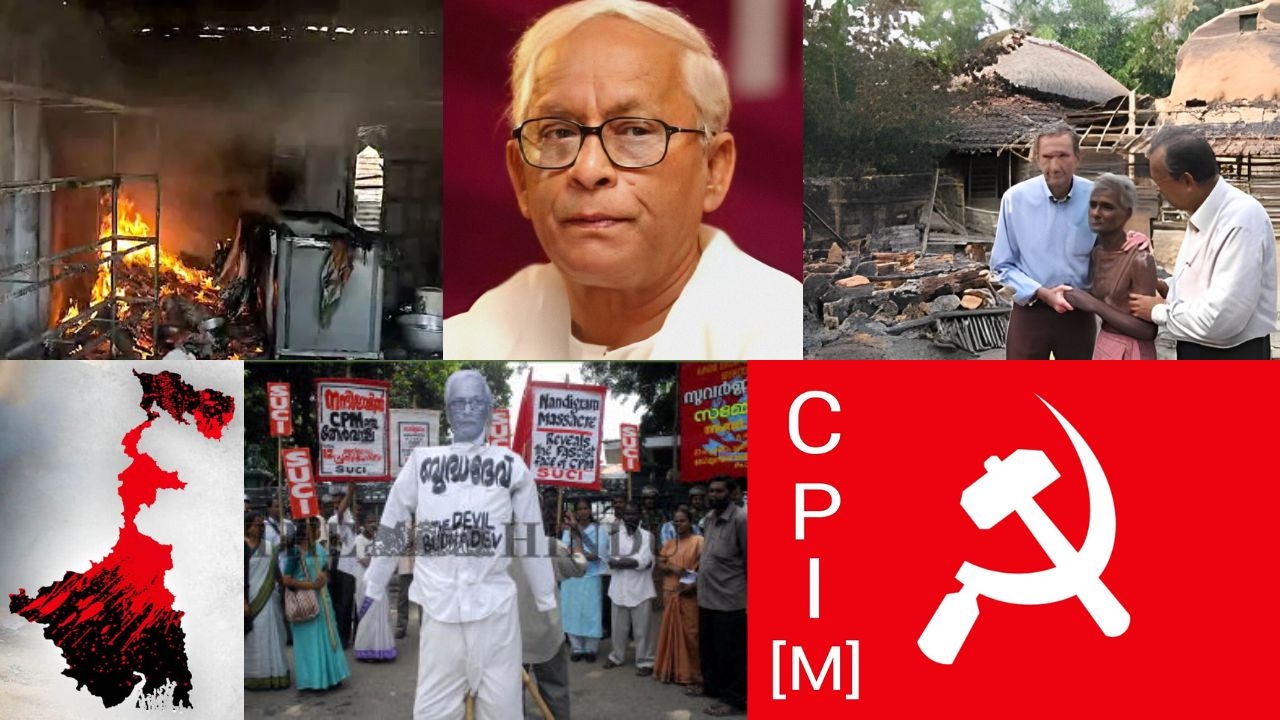Nandigram Massacre: A Stain on CPI-M's So-called Proletarian Governance
The worst came when the security forces opened fire on the unarmed villagers. Even though the official death figure was 14, and over 70 were injured, eyewitnesses and the independent reports cited that it probably is that the real casualty could be many more than the officially reported and declared.
Total Views |

The Nandigram Massacre of 14 March 2007 is one of the darkest chapters in India's recent history and is a grim pointer towards how policies of the CPI-M-led government were being visualised and implemented with impunity. The incident, based on the forcing of agricultural land for industrial purposes, occurred in the Purba Medinipur district within West Bengal.
This article attempts to highlight the background, the tragic occurrences, and the subsequent events of the Nandigram Massacre, ultimately unveiling the guilt of the CPI-M leadership by exposing how such repressive policies were applied in the name of undertaking service for the poor and proletariat.
Background of the Incident
The seeds of this tragedy in Nandigram were sown when the CPI-M regime headed by Chief Minister Buddhadeb Bhattacharjee launched an aggressive industrialization policy. It was to acquire fertile farmland of 10,000 acres in Nandigram and hand it over to the Indonesian conglomerate Salim Group for developing a Special Economic Zone.
This massive area of productive land was vehemently resisted for a takeover by local farmers who made their living off such land. The farmers, however, unified under the umbrella of the Bhumi Uchhed Pratirodh Committee—a locally raised organisation for the protection of their lands—did not easily succumb to government moves. At the root of BUPC opposition lay the deep-seated fear of displacement and loss of livelihood due to an act that the CPI-M government wanted to ignore. Instead of cooperation, coercion came to typify the government approach to people for whom they take up power.
The Massacre Unfolds
The situation boiled over on March 14, 2007. Intending to quell the ongoing resistance in Nandigram, the notorious Harmad Bahini cadre engaged in an armed militia noted for its brutality. A planned and coordinated attack on the villagers took place. Armed to their teeth, the Harmad Bahini, along with the police, invaded Nandigram and started firing. They set huts ablaze, destroyed properties, and terrorised the residents.
“The worst came when the security forces opened fire on the unarmed villagers. Even though the official death figure was 14, and over 70 were injured, eyewitnesses and the independent reports cited that it probably is that the real casualty could be many more than the officially reported and declared. A shocking pile of bodies being collected and dumped was witnessed by the villagers, and this unforgettable scene is etched into the memory of the community.”
The CPI-M government's response to the massacre reinforced just how cold its action was. Instead of feeling remorse, the leadership tried to justify the bloodshed as a step towards the restoration of order to facilitate development—a brazen show of disregard for human life and democratic principles, thus giving way to the unmasking of the governance of CPI-M: industrial interests supersede the welfare of the people.
The Role of CPI-M Leadership
The Nandigram Massacre was not a one-time event but the symptom of an age-old tradition in the CPI-M: the use of force to deter dissent. Under the regime of Buddhadeb Bhattacharjee, the CPI-M chose to impose its policies in an authoritarian way by silencing all kinds of opposition to them. The massacre emphasised that it would go to any extreme measure in meeting its goals, spacing out the very fundamentals of proletarian governance to which it was declaredly adhering.
Thus, Buddhadeb Bhattacharjee, along with other senior CPI-M leaders, directly shared the responsibility for this massacre. There was no regard for democratic norms and human rights in their act of sending in armed cadres and police against unarmed villagers. CPI-M leadership did oppress the rights of those among whom they cited as champions in their land-grabbing and industrialization spree.
Aftermath and Legacy
The Nandigram Massacre proved to be a very potent political turn for West Bengal. Public sentiment against the CPI-M was oriented in mass protests and condemnation. Its image never recovered from this, and it made its way out of power in the 2011 state elections. The people of West Bengal, disillusioned by decades of CPI-M rule, rejected the party's oppressive policies and embraced change.
The Nandigram Massacre speaks volumes on how hazardous dictatorial governance could be. It sends us a clear message: we should protect our democratic values at all times and safeguard the rights of the common citizen from state-sponsored hooliganism. This massacre further typifies the never-to-be-broken strength of the human spirit, where the villagers of Nandigram united for their emancipation from tyranny.
Conclusion
The Nandigram Massacre is a stigma on the history of CPI-M and its administration. How mercilessly the party was carrying out industrialization at the cost of human lives and livelihood was exposed before the world by this incident. There is no denying that the CPI-M leadership, with Buddhadeb Bhattacharjee at the helm of affairs, is solely responsible for the killings and atrocities on the villagers of Nandigram.
There is a great deal that this nation needs to learn from Nandigram. The massacre stands as a reminder of how dangerous regimes led by obsessions with interests are to human welfare. It becomes an appeal for keeping ourselves sensitized against all forms of oppression and upholding values such as democracy, justice, and human rights.
The violent legacy of CPI-M, which reached its apogee in the Nandigram Massacre, should act as a lesson for times to come. The party not only broke the trust of those it professed to raise but acted diametrically opposite to the tenets of democracy through high-handedness. The people of India, in their pursuit of a just and equitable society, must reject such regressive ideologies and strive towards a future where every citizen's rights are protected and respected.
Article by
Shomen Chandra
Sub Editor, The Narrative


